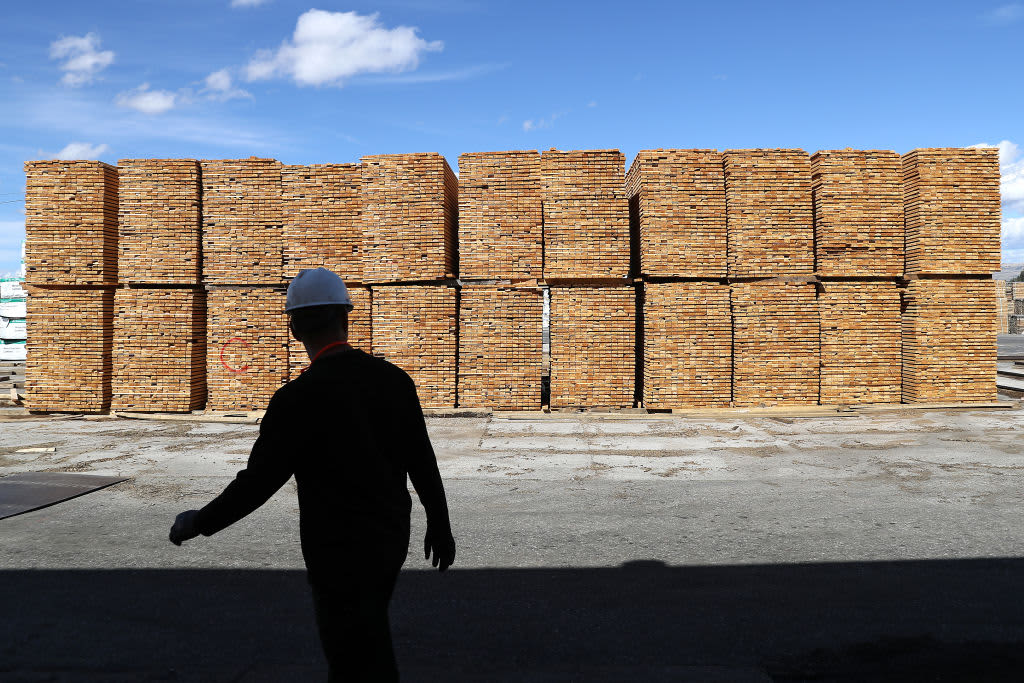Lumber executive expects volatility, elevated prices to last for ‘foreseeable future’

A lumber industry veteran told CNBC on Thursday he expects the hot lumber market to persist, at least for a few more months, keeping both prices and volatility elevated.
“Our belief is that this cycle that we’re currently in … is here for the foreseeable future,” said Kyle Little, chief operating officer at Sherwood Lumber, a privately held New York-based wholesale distributor. He’s also a former lumber trader.
“That doesn’t mean we’re not going to trade off those most recent highs,” Little said in an interview on “The Exchange,” referring to May 10, when lumber hit a record of $1,711 per thousand board feet.
“But the lows will tend to be much, much higher than they were in the past because of the lack of supply and the high rate of demand that’s out in the marketplace,” he said.
Little said his view is informed by research his company conducted late last year, analyzing seven previous bullish cycles in lumber over the past 35 years. They’ve ranged from nine months to 41 months, he said, with the average falling between 18 and 24 months.
He said the current boom is in roughly its 11th month, sparked partly by a pandemic-related surge in home construction that caught both homebuilders and lumber producers off guard.
“Volatility is all over the place, and we expect that to continue to be that way in lumber,” Little said.
The Chicago Mercantile Exchange has a maximum price range, known as limit up and limit down, that futures contracts for various commodities are allowed to trade within for each session.
Lumber futures for July delivery rose 4.75% on Thursday, hitting limit up in the session at $1,390 per thousand board feet.
The action Thursday follows a wild session a day earlier, in which lumber futures hit limit down, then went on to hit limit up later in the day.
There have been questions about when soaring lumber prices, which add to construction costs, would begin to cause a cooling in demand. Recent data showed that in April single-family housing starts declined over 13% compared with the prior month, and the cost of lumber and other commodities was seen as one factor in the slowdown.
For Sherwood Lumber, Little said, “one of the key metrics that we look at specifically in measuring short-term demand and pace of sales is looking at our current shipments relative to our actual sales pace.”
In the past six months, as the lumber market heated up, sales compared with shipping rate accelerated to more than “double and triple the amount,” he said. But that’s changed recently.
“We’ve seen a decrease from the peak that we saw at the end of April of about 27% over the last two weeks,” he said. “It looks like we’ll see a similar kind of reduction this week, as well.”




